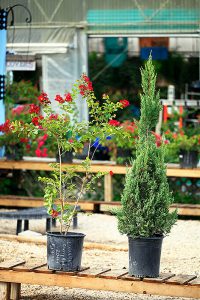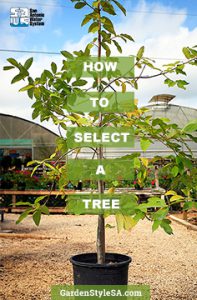Selecting and planting trees isn’t rocket science. But knowing a few basics before you buy can help ensure the survival of your freshly sown sapling.
Selecting and planting trees are not tasks shrouded in mystery and magic. No chant or sacrificial offerings will be needed to ensure the survival of your newly planted tree.

Of course, both novice and experienced tree planters alike can benefit from knowing these basics before you buy. Nurseries sell trees in three forms: bare root, balled-and-burlapped (aka “B and B”) and containerized.
Bare root trees lack soil or growing media on their roots. Therefore, it’s imperative to keep the roots moist by soaking them in water or covering roots with wet peat moss. Store bare-root trees in a cool place until planting time.
Balled-and-burlapped trees, on the other hand, retain their native soil. Despite losing 93 percent or more of their root system during the digging process, “B and B” trees generally have a higher survival rate than transplanted bare rootstock.
Containerized plants are currently very popular, but they frequently suffer from poor root structure. During the transplanting process, these deformities must be gently straightened or cut.
When choosing the right tree for your home, remember the 5 S’s: Specific, Site, Space, Structure and Standards. Specifically refers to the purpose of your new tree, i.e. shade, privacy, color, etc. Likewise, site refers to the matching of the biological requirements to the physical conditions of the area. Thirdly, space describes the need for adequate room above (vertically and horizontally) and below ground for future growth. Structure applies to the specimen’s physical attributes including trunk thickness and branch distribution.
Above all, examine the trees carefully before you buy, and buy for quality.



